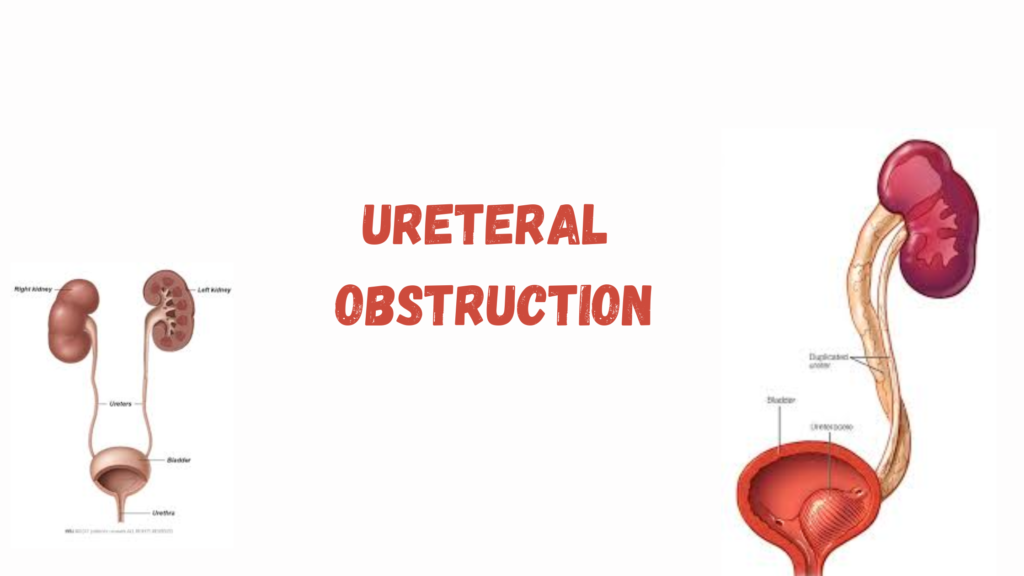Ureteral obstruction refers to a blockage of one or both ureters, the tubes that carry urine from the kidneys to the bladder. This obstruction prevents normal urine flow and can lead to hydronephrosis (swelling of the kidney), kidney damage, or infection if not treated promptly.
🔍 Causes of Ureteral Obstruction
- Kidney stones (ureterolithiasis) – Most common cause.
- Tumors – Either in the urinary tract or pressing from outside (e.g., pelvic or abdominal cancers).
- Ureteral strictures – Narrowing of the ureter due to scarring, often from:
- Previous surgery
- Radiation therapy
- Chronic infection
- Congenital abnormalities – Such as ureteropelvic junction (UPJ) obstruction.
- Retroperitoneal fibrosis – Scar tissue compresses the ureters.
- Enlarged prostate – Can cause lower ureteral obstruction in males.
- Pregnancy – Uterus may compress the ureters.
⚠️ Symptoms
Depends on whether the obstruction is partial or complete, and unilateral or bilateral:
- Flank or abdominal pain
- Hematuria (blood in urine)
- Nausea and vomiting
- Frequent UTIs
- Decreased urine output (especially in bilateral obstruction)
- Fever and chills (if infection develops)
🧪 Diagnosis
- Imaging:
- Ultrasound – Detects hydronephrosis.
- CT scan – Best for identifying stones or masses.
- MRI or MR urogram – For soft tissue causes or in pregnant patients.
- Intravenous pyelogram (IVP) – Less common now, used to visualize ureteral flow.
- Urine tests – To check for infection or hematuria.
- Blood tests – To assess kidney function (e.g., creatinine, BUN).
🩺 Treatment
Treatment depends on the cause and severity:
Acute relief:
- Ureteral stent – A small tube placed to bypass the obstruction.
- Nephrostomy tube – Drains urine directly from the kidney if the lower tract is blocked.
Definitive management:
- Stone removal (e.g., ureteroscopy, lithotripsy)
- Tumor resection or debulking
- Balloon dilation or surgical repair of strictures
- Treatment of underlying disease (e.g., prostate surgery, cancer therapy)
🚨 Complications if Untreated
- Chronic kidney damage or failure
- Recurrent urinary tract infections
- Sepsis (if infection is present)
- Permanent loss of kidney function on the affected side
